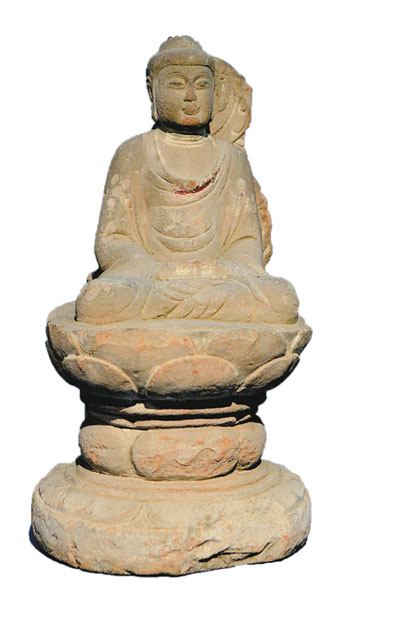|

Wang Yuanyuan, Shen Xingyou
cheekywang@hotmail.com
Dates: Until Oct. 20
Hours: 9 a.m.-5 p.m. Closed Mondays
Venue: Old Shenzhen Museum, 6 Tongxin Road, Futian District (福田区同心路6号深圳博物馆老馆)
Metro: Luobao Line and Shekou Line, Grand Theater Station (大剧院站), Exit B
ABOUT 60 stone statues of Buddha discovered in Sichuan Province are being exhibited at the old Shenzhen Museum in Futian District until Oct. 20.
The statues are representative works selected from Wanfo Temple in Chengdu and Longxing Temple in Qionglai, both well-known ancient temples where modern archaeologists have unearthed many relics, said Xie Zhicheng, vice president of the Sichuan Museum.
The majority of the statues are sculpted in limestone and stand as cultural relics of immense significance to those interested in archaeology, sculpture and the history of Buddhism in China. They also represent the advanced development of political, religious, social and economic areas in Sichuan Province during the Northern and Southern Dynasties (386-589) and the Sui Dynasty (581-618).
Sichuan Province has been called “the land of abundance” since ancient times and is the political, economic and cultural center of the upper regions of the Yangtze River. Since the Northern and Southern Dynasties, Buddhism has grown increasingly popular in the province, making the area an important hub for the spread of Buddhism.
The ancient ruins of Wanfo Temple are located outside the west gate of Chengdu, Sichuan’s capital. In ancient times, the temple was a well-known venue for Buddhist ceremonies and events. It was built during the Han Dynasty (206 B.C.-A.D. 220) and was destroyed in a war during the Ming Dynasty (1368-1644). The temple was discovered in 1882 by villagers. So far, more than 200 Buddha statues, stone steles, architectural pieces and other relics have been unearthed. The findings play a significant role in Buddhism studies nationwide because of their complicated and beautiful designs and themes.
Longxing traditions
Qionglai, about 75 kilometers from Chengdu, was an important hub on the southern Silk Road for centuries. It had a very developed economy from the Qin Dynasty (221-206 B.C.) to the Tang Dynasty (618-907). In 1947, several Buddha statues made in the Tang Dynasty were discovered after a flood along the city’s Xihe River. Several years later, archaeologists found the ruins of Longxing Temple.
The temple’s name has an ancient history.
In 707, Li Xian became emperor during the Tang Dynasty. Because his title was Zhongzong, many Zhongxing temples in the country changed their names to Longxing to mark their respect — removing the “zhong” character from temples’ names to reserve the character only for the emperor.
Longxing Temple in Qionglai, covering 100,000 square meters, is the largest temple ruin from the Tang Dynasty found in China to date. Statues found in the temple are similar to relics that have been found in Mogao grottoes, Maiji Mountain grottoes and Yungang grottoes, displaying the elegant and beautiful style of Tang people.
One of the most recommended items in the Futian exhibition is a Buddha head that was found in Wanfo Temple in 1937 and demonstrates artistic techniques of the Southern Dynasty.
Other recommended items include a back-screen Buddha statue from the Southern Dynasty, a Vajrapani statue from the Tang Dynasty and a Guanyin statue from the Tang.
|

